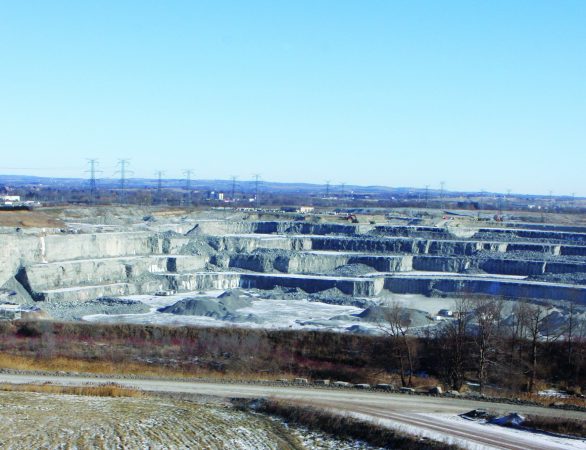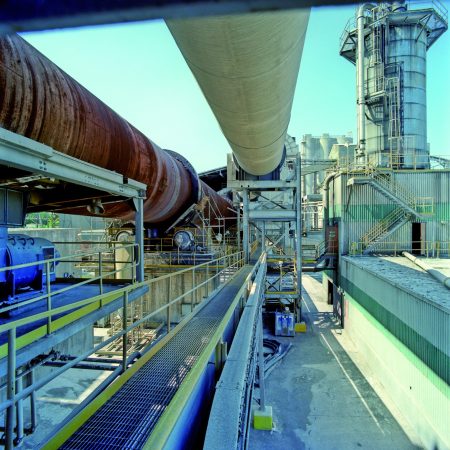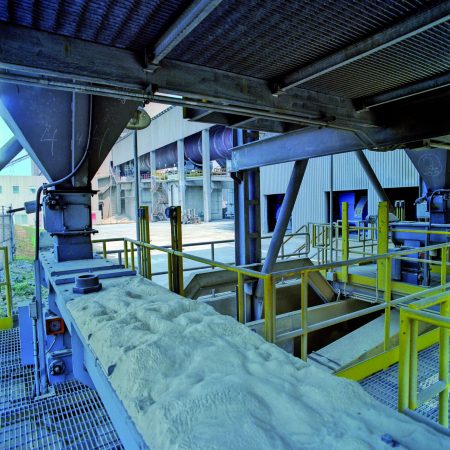
Radar technology easily solves the level measurement challenges in the cement industry
Don Horne
Franklin Empire is the exclusive Siemens distributor for most of Ontario and Quebec. Their team provides more than 75 years of industrial instrumentation experience and field application knowledge of the equipment available from premier manufacturers.
Franklin Empire provides comprehensive services including start-up and commissioning, field support, yearly service and maintenance, and annual calibrations on any industrial instrumentation application. Solutions are used in numerous industries including cement, steel, mining, aggregates, pharmaceutical, food & beverage, power & energy, water/wastewater, district metering, pulp & paper, chemical, petrochemical, and automotive.
The full range of process instrumentation Franklin Empire offers covers everything you need from level, flow, pressure, temperature, mass dynamics, and pneumatics to communication and display.
Given Franklin Empire’s expertise and local presence, St. Marys Cement Group contacted them to provide a solution to measuring long distances in very dusty cement silos.
St Marys Cement is part of the North American operations of international building materials supplier, Votorantim Cimentos, based in Sao Paulo, Brazil. Votorantim Cimentos operates 31 cement plants in 10 countries around the world. Its St Marys Bowmanville plant near Toronto, Ont., produces approximately 1.8 million tons of clinker and 1.2 million tons of Portland cement annually. In operation since the late 1960’s, it is currently one of the most modern facilities in North America.
The plant has used many technologies for level measurement in the past 40 years with marginal success. The environment for level measurement in a cement production facility is brutal: it includes extreme levels of dust, high temperatures, and mechanical wear and tear. Since most of the level measurement sensors are located at the top of the silos – and some of these silos are approaching eighty meters in height – access to the sensors is difficult, especially if an elevator is not available.
In the past, maintenance of level measurement transmitters has been costly, and consisted of either cleaning or replacing sensors on a shutdown schedule or during an unplanned maintenance event.
The Challenge
Siemens has been involved with the cement industry for over 100 years, providing all types of process instrumentation, and is well aware of the level measurement challenges of the cement processing plant.
 Due to high abrasion and high bulk density of the solids materials found in the cement plant, contacting type transmitters prove to have a number of disadvantages: excessive wear and maintenance, and cables can break and fall into the process. A cable falling into the vessel will cause damage to the feeding device under the silo, resulting in expensive repairs and a potential costly production stop. Extremely dusty filling cycles have been a challenge for ultrasonic level measurement, with signal loss due to severe attenuation. Additionally, high temperatures of material such as clinker in the silos limit the choice of sensors considerably.
Due to high abrasion and high bulk density of the solids materials found in the cement plant, contacting type transmitters prove to have a number of disadvantages: excessive wear and maintenance, and cables can break and fall into the process. A cable falling into the vessel will cause damage to the feeding device under the silo, resulting in expensive repairs and a potential costly production stop. Extremely dusty filling cycles have been a challenge for ultrasonic level measurement, with signal loss due to severe attenuation. Additionally, high temperatures of material such as clinker in the silos limit the choice of sensors considerably.
Siemens introduced 25 GHz radar technology for solids in early 2000. A non-contacting technology, radar uses electromagnetic waves traveling at the speed of light to determine the distance to the target. Radar is virtually unaffected by intense dust and extreme temperatures, and is therefore most suitable for the cement industry. Once considered expensive and difficult to set up, radar today offers cost-effective, 2-wire loop powered technology that is simple to commission and can be used throughout the entire process. From raw material storage, homogenization, clinker cooling bed level, to finished cement, 25 GHz radar has become the standard level measurement technology for the majority of cement producers worldwide.
To view more articles like this in our Level Measurement handbook, click here.
Over the next few years it is expected that the new higher frequency 78 GHz radar will replace the 25 GHz technology, as it offers a smaller antenna and a narrower beam, yielding decreased installation and commissioning costs, and even better performance.
Homogenization silo
The homogenization silo has been the most challenging of all level measurement applications in the plant. In the spring of 2000 Siemens tested the very first SITRANS LR in North America on this silo. This 80 meter high silo – referred to as ‘CF’ silo for continuous flow – is continuously filled with multiple air slides, making it extremely dusty: a light source lowered from the top is invisible beyond five meters.
The CF silo feeds production directly. Monitoring the level is critical because the CF silo is used to mix the raw material into a homogenous state, and requires a minimum level to maintain uniform quality. The silo is constantly aerated to mix the material, producing a fluidized surface. The silo is constantly filled and emptied at the same time which makes reliable level measurement even more critical. Production not only uses the level readings to control the level in the silo and to optimize quality, but also to plan production quantities, and to schedule shutdown periods.
Although it is a critical process, obtaining reliable continuous measurement was impossible in the past. The company has tried both a plumb-bob system and ultra-sonic systems without success. Turbulence inside the vessel caused the weight from the end of the plumb-bob cable to break off, and even the most powerful ultrasonic sensors could only measure distances of ten meters. Siemens radar technology has proven to be the perfect solution for this most difficult application.
Currently, a 2-wire SITRANS LR560 FMCW (Frequency Modulated Continuous Wave) radar transmitter is providing continuous reliable trend data of the material in the silo.
SITRANS LR560 is the first radar level transmitter operating at 78 GHz frequency: higher than other radar transmitters. Using the 78 GHz frequency electromagnetic waves (microwaves), SITRANS LR560 has a measurement range of 100 meters (328 ft), and is unaffected by the extreme dust in the silo. Reliable level measurement trends optimize production efficiency, and even yield an increase in product quality as the level in this silo can be maintained more accurately.
Raw material additive silos
Raw meal used in the production of Portland cement primarily consists of the raw materials limestone, ash, sand and iron. All of these raw materials are effectively measured with radar. The sand additive silo is currently monitored reliably with a SITRANS LR560 level transmitter. The angle of repose of sand in a silo poses a challenge even for 25 GHz radar transmitters, as it tends to disperse the reflected signals away from the transmitter. This is another application where the 78 GHz of SITRANS LR560 demonstrates its advantages. The location of the sensor was tricky, as there is a structural member close to the sensor. However the narrow beam of the SITRANS LR560 did not even ‘see’ this steel obstruction, and no fine-tuning was required.
The SITRANS LR560 transmitter, with a small diameter lens antenna emitting a narrow four degree beam avoids silo wall obstructions and other installation interferences, can be installed practically anywhere on the top of the silo. Operating at 78 GHz frequency, it emits a short wavelength to provide exceptional signal reflection even from solids with a steep angle of repose, like sand.
Clinker silo level
Clinker at St Marys Cement is either stored on-site in two 229 feet (70 meter) coarse silos or conveyed to the two dock silos ready for loading onto ships. The clinker is still very hot and extremely dusty as it is loaded into the silos. The high temperature and extreme dust were a challenge for the ultrasonic technology that was previously used. St Marys presently has four SITRANS LR radar transmitters monitoring clinker silo levels reliably. Over-filling the clinker silo is a safety concern, and the radar transmitters ensure this will never occur.
Clinker cooler bed level control
The clinker exits the kiln at temperatures of over 1800 ºF (1000 ºC) and must be cooled before moving on conventional rubber belts to the clinker silos. The clinker is pushed with a metallic grate and air is directed from below to cool the clinker. The depth of clinker on the cooler grate affects not only the production rate of the facility, but also the quality and consistency of the final product. Traditionally, the bed depth of clinker on the cooler is ‘inferred’ by measuring a secondary effect. The two most common secondary measurements are:
- The hydraulic pressure on the grate drive: the higher the pressure, the more material the grate is moving; and
- The cooling air pressure: the higher the back pressure, the more material is present.
The problem with using secondary measurements for clinker bed depth control is that the response rate is slow, as there is an inherent time lag between the inferred measurement and the control device. Accuracy is also compromised, as the measured secondary effect is rarely linear or even repeatable. Direct measurement of the clinker depth has traditionally been fraught with problems, especially due to the extreme high temperature of the product and the ambient environment directly in front of the kiln.
 To gain better control and lower their operating cost, St. Marys uses radar technology to measure the clinker level directly on the clinker bed. Directly measuring the level of the clinker means that measurements are immediate, and there is no lag time. Also, it is more accurate as measurements are not inferred from a secondary source. Lastly, since there is only one instrument that is measuring the level, it costs less than using a secondary measurement device. The extreme temperature inside the kiln is reduced to nominal levels at the radar transmitter by using a one meter long pipe extension. The very narrow beam of the 78 GHz SITRANS LR560 can operate effectively in this extension pipe.
To gain better control and lower their operating cost, St. Marys uses radar technology to measure the clinker level directly on the clinker bed. Directly measuring the level of the clinker means that measurements are immediate, and there is no lag time. Also, it is more accurate as measurements are not inferred from a secondary source. Lastly, since there is only one instrument that is measuring the level, it costs less than using a secondary measurement device. The extreme temperature inside the kiln is reduced to nominal levels at the radar transmitter by using a one meter long pipe extension. The very narrow beam of the 78 GHz SITRANS LR560 can operate effectively in this extension pipe.
Benefits
SITRANS LR560 proves its value through-out the production process at St. Marys Cement in Bowmanville. With its unique 78 GHz frequency and narrow, four degree beam, SITRANS LR560 measures level reliably in applications with extreme dust and high temperatures, and over the long ranges customary in the cement industry. Reliably monitoring inventory levels means production can be planned efficiently, and raw materials levels can be maintained.
 Reliable process control of the level applications like the CF silo, allows for increased product quality. Maintaining reliable clinker bed level yields lower operating costs, and increased safety. Maintenance costs have been significantly reduced, and in some cases eliminated, and unlike contacting cable technology there is zero risk of any cable breaking off and falling into the process.
Reliable process control of the level applications like the CF silo, allows for increased product quality. Maintaining reliable clinker bed level yields lower operating costs, and increased safety. Maintenance costs have been significantly reduced, and in some cases eliminated, and unlike contacting cable technology there is zero risk of any cable breaking off and falling into the process.
SITRANS LR560 is easy to install and commission. The graphical Quick Start Wizard guides the user to get Sitrans LR560 operational in minutes for accurate and reliable level measurement readings without any additional fine-tuning. In addition, reliability and minimal need of maintenance have significantly reduced safety hazards to employees as daily trips to the top of the silos have been eliminated.
“Siemens latest radar unit, the SITRANS LR560, has proven very reliable and robust in some of our toughest silo measurement applications. The 2-wire unit reduces installation costs with its smaller, lighter design, while providing valuable real-time silo measurements critical to our production needs. As such we have spec’d this unit for upcoming projects where silo measurement is required.” states Kevin Hodgins, Electrical Supervisor, St Marys Cement, Bowmanville Plant.
Franklin Empire
1-800-361-5044
Learn More about the SITRAINS LR560
Download Catalogue Specifications
